Key Takeaways
1. Confusion is a natural part of coding, stemming from knowledge gaps, information scarcity, or processing limitations.
Confusion is part of programming.
Three Types of Confusion. Coding often involves confusion, whether it's due to unfamiliar syntax, complex algorithms, or new domain concepts. Recognizing the source of confusion is the first step to addressing it. There are three primary types of confusion:
- Lack of knowledge: Not knowing the meaning of a specific term or concept.
- Lack of information: Not having immediate access to all the details needed to understand a piece of code.
- Lack of processing power: Code is too complex to mentally trace without external aids.
Decoding Confusion. By identifying the type of confusion, programmers can apply targeted strategies to overcome it. For example, if the confusion stems from a lack of knowledge, the programmer can research the unfamiliar concept. If the confusion stems from a lack of information, the programmer can navigate to the relevant code definitions. If the confusion stems from a lack of processing power, the programmer can use memory aids to trace the code's execution.
Embrace the Process. It's important to remember that confusion is a normal part of the learning process. By recognizing the different types of confusion and applying appropriate strategies, programmers can become more effective at understanding and working with code.
2. Long-Term Memory (LTM), Short-Term Memory (STM), and Working Memory collaborate during coding.
The arrows labeled 1 represent information coming into your brain. The arrows labeled 2 indicate the information that proceeds into your STM. Arrow 3 represents information traveling from the STM into the working memory, where it’s combined with information from the LTM (arrow 4). Working memory is where the information is processed while you think about it.
Memory Systems. Three cognitive processes are essential for programming: Long-Term Memory (LTM), Short-Term Memory (STM), and Working Memory. Each plays a distinct role in how we process and interact with code.
- LTM stores knowledge and experiences over long periods.
- STM briefly holds incoming information.
- Working Memory processes information from both LTM and STM to solve problems.
Collaboration is Key. These memory systems don't operate in isolation. They work together to enable programmers to read, understand, and write code. For example, when reading a variable name, STM holds the name temporarily, while LTM provides the meaning and context. Working Memory then uses this information to understand the code's purpose.
Cognitive Processes. Understanding how these cognitive processes interact can help programmers optimize their workflow and improve their coding skills. By recognizing the limitations of each memory system, programmers can develop strategies to reduce cognitive load and enhance their ability to process information effectively.
3. Speed reading code involves chunking, where the brain groups information to bypass STM limits.
The most crucial reason is the limited capacity of your STM.
STM Limitations. Short-Term Memory (STM) has a limited capacity, typically holding only a few items at a time. This limitation makes it challenging to process large amounts of information, such as complex code.
Chunking to Overcome Limits. Chunking is a cognitive strategy where the brain groups individual pieces of information into meaningful units. This allows the STM to hold more information by treating each chunk as a single item. Expert programmers can remember more code because they can chunk it into larger, more meaningful units.
Chunking Examples.
- Recognizing design patterns: Instead of seeing individual lines of code, an expert might recognize a "factory pattern" and treat it as a single chunk.
- Understanding common idioms: Knowing common code structures allows programmers to quickly grasp their purpose.
- Using domain knowledge: Familiarity with the problem domain enables programmers to group related code elements.
4. Syntax mastery is crucial; flashcards and spaced repetition enhance retention.
Therefore, memorizing programming syntax, concepts, and data structures will help you to process code faster.
Syntax Knowledge. Knowing syntax by heart reduces the need to constantly look up information, minimizing distractions and improving focus. This is especially important for efficient coding.
Flashcards for Quick Learning. Flashcards are an effective tool for quickly learning and memorizing syntax. By writing the concept on one side and the corresponding code on the other, programmers can actively test their knowledge and reinforce their memory.
Spaced Repetition. To combat forgetting, spaced repetition is a valuable technique. By revisiting flashcards at increasing intervals, programmers can strengthen their long-term memory and ensure that syntax knowledge remains readily accessible.
5. Refactoring and memory aids reduce cognitive load when deciphering complex code.
The fact that you feel the need to do this means that your brain lacks the capacity to process the code.
Working Memory Overload. Complex code can easily overload the working memory, making it difficult to understand and reason about. This overload can lead to errors and frustration.
Refactoring for Clarity. Refactoring involves restructuring code to improve its readability and maintainability without changing its functionality. By simplifying complex code, refactoring reduces cognitive load and makes it easier to understand.
Memory Aids. When the working memory is overloaded, external memory aids can be helpful. These aids can include:
- Dependency graphs: Visual representations of the relationships between different parts of the code.
- State tables: Tables that track the values of variables at different points in the code's execution.
6. Understanding variable roles and code structure fosters deeper comprehension.
Understanding what types of information variables hold is key to being able to reason about and make changes to code.
Roles of Variables. Variables play different roles in a program, such as fixed values, steppers, flags, and most-wanted holders. Recognizing these roles can help programmers understand the purpose and behavior of variables.
Text vs. Plan Knowledge. There are two levels of understanding code: text structure knowledge (surface-level understanding of syntax and variables) and plan knowledge (understanding the programmer's intent and the code's overall structure). Plan knowledge is essential for making meaningful changes to code.
Text Comprehension Strategies. Strategies used for reading natural language, such as activating prior knowledge, monitoring understanding, and summarizing, can also be applied to code reading. These strategies can help programmers gain a deeper understanding of the code's purpose and structure.
7. Mental models and notional machines aid in problem-solving by simplifying code concepts.
Mental models are simplified representations of reality, and the main goal of a model is to support you in thinking about a problem and ultimately solving it.
Mental Models. Mental models are internal representations of how systems work. They allow programmers to reason about code and predict its behavior without having to execute it.
Notional Machines. Notional machines are abstract representations of how computers execute code. They provide a simplified view of the underlying hardware and software, making it easier to understand programming concepts.
Benefits of Models. Both mental models and notional machines help programmers simplify complex systems and reduce cognitive load. By providing a framework for understanding code, they enable programmers to solve problems more effectively.
8. Misconceptions hinder progress; conceptual change and suppression are key to debugging thinking.
When you are sure your code will work, but it still fails, chances are that you are suffering from a misconception.
Misconceptions. Misconceptions are faulty assumptions about code that can lead to errors and bugs. They often stem from negative transfer, where knowledge from one programming language or domain is incorrectly applied to another.
Conceptual Change. To overcome misconceptions, it's not enough to simply point out the error. Programmers need to undergo conceptual change, replacing the faulty assumption with a correct understanding.
Suppressing Misconceptions. Even after conceptual change, old misconceptions can still resurface. Programmers need to actively suppress these misconceptions and reinforce the correct understanding through practice and testing.
9. Clear naming conventions reduce cognitive load and prevent bugs.
Clear names help your LTM.
Naming Matters. Clear and consistent naming conventions are essential for code comprehension. Good names act as beacons, guiding readers through the code and reducing cognitive load.
Cognitive Aspects of Naming. Well-chosen names support both short-term and long-term memory. They help the STM chunk code effectively and allow the LTM to retrieve relevant knowledge and experiences.
Naming Styles. Different naming styles, such as snake case and camel case, can impact readability and memorability. Choosing a consistent style and adhering to it throughout the codebase is crucial.
10. Code smells increase cognitive load, while linguistic antipatterns create confusion.
Why code with code smells creates a lot of cognitive load.
Code Smells. Code smells are structural issues in code that indicate potential problems. They can increase cognitive load and make code harder to understand and maintain.
Linguistic Antipatterns. Linguistic antipatterns are inconsistencies between the names of code elements and their actual behavior. They can create confusion and lead to errors.
Reducing Cognitive Load. By addressing code smells and linguistic antipatterns, programmers can reduce cognitive load and improve the overall quality of their code. This can lead to fewer bugs, easier maintenance, and better collaboration.
11. Automatization and learning from examples enhance problem-solving skills.
Improving implicit memories.
Automatization. Automatization is the process of making skills automatic through repetition and practice. By automatizing common coding tasks, programmers can free up cognitive resources for more complex problem-solving.
Learning from Examples. Studying worked examples, or solutions to similar problems, can help programmers develop new problem-solving strategies. By analyzing how others have solved problems, programmers can expand their repertoire of techniques and improve their ability to tackle new challenges.
Germane Load. Germane load is the cognitive effort required to store new information in long-term memory. By reducing extraneous cognitive load, programmers can increase germane load and improve their ability to learn and retain new knowledge.
12. Cognitive Dimensions of Codebases (CDCB) help design usable and maintainable systems.
Examining the properties of codebases.
Cognitive Dimensions. Cognitive Dimensions of Codebases (CDCB) is a framework for evaluating the usability and maintainability of codebases. It considers factors such as error-proneness, consistency, visibility, and viscosity.
Design Maneuvers. Design maneuvers are changes to a codebase that improve its cognitive dimensions. By applying design maneuvers, programmers can make their codebases easier to understand, use, and maintain.
Trade-offs. Improving one cognitive dimension can sometimes negatively impact another. Programmers need to carefully consider these trade-offs when making design decisions.
13. Effective onboarding supports memory and limits programming activities.
Support the memory of the onboardee.
Onboarding Challenges. Onboarding new developers can be challenging, especially when they are unfamiliar with the codebase or programming language. Overloading newcomers with too much information can lead to frustration and poor performance.
Supporting Memory. To improve the onboarding process, it's important to support the newcomer's memory. This can be done by providing clear documentation, code examples, and opportunities for hands-on practice.
Limiting Activities. During the initial stages of onboarding, it's helpful to limit the newcomer's programming activities. Focus on one or two key tasks, such as reading code or fixing small bugs. This allows the newcomer to build a solid foundation of knowledge and skills before taking on more complex tasks.
Last updated:
Review Summary
The Programmer's Brain receives mostly positive reviews for its unique exploration of cognitive science in programming. Readers appreciate the insights on how the brain processes code, strategies for better reading and writing code, and tips for onboarding new developers. Many find it engaging and enlightening, with practical advice backed by scientific research. Some criticize the book's wordiness and question the applicability of certain suggestions. Overall, reviewers recommend it as an essential read for programmers, offering valuable perspectives on improving coding skills and understanding cognitive processes.
Similar Books
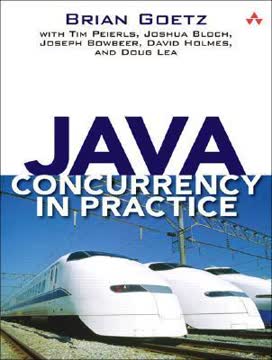

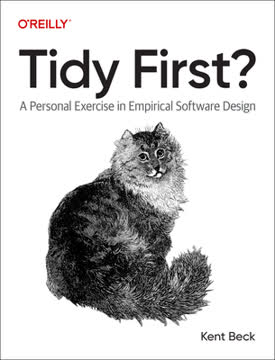
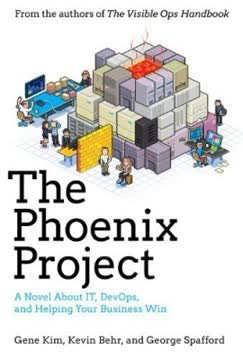



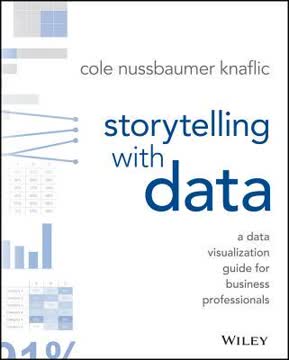
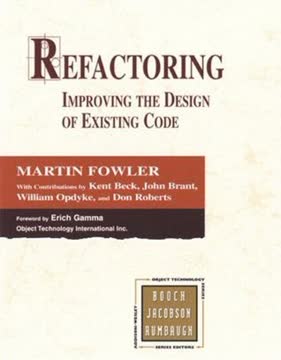
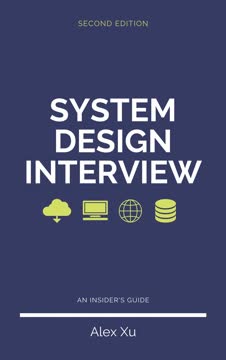
Download PDF
Download EPUB
.epub digital book format is ideal for reading ebooks on phones, tablets, and e-readers.




